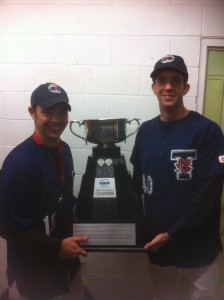Today is Pi Day, and as part of the March Break Math Camp that the department is running the students are celebrating this fascinating and mysterious number with activities, investigations and, of course, pie. Apple pie to be exact. We’ve even been featured in a Toronto Star article about the day.
The March Break Math Camp, open to students in Grades 4 – 10, has seen 57 students participate in a week of hands-on, interactive activities designed to introduce and excite them about the various fields of mathematics. From number theory to geometry to building geodesic domes and optimizations. The camp has also drawn from a partnership with the Canadian Math Kangaroo Competition to provide students with competition based problems and content. Today they celebrate Pi with discussions of circles and the fascinating number ratio itself.
In addition, the camp will see guest speakers from the Department of Mathematics give talks to students on optimization, Mobius strips, origami and math, the board game Blockus and how Google works.




